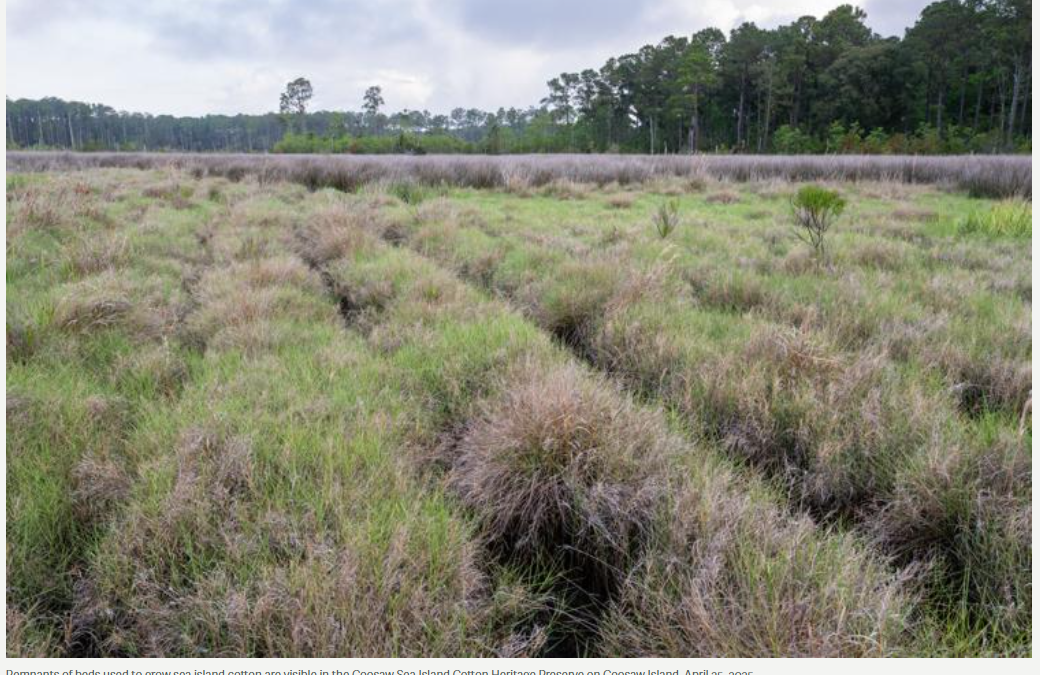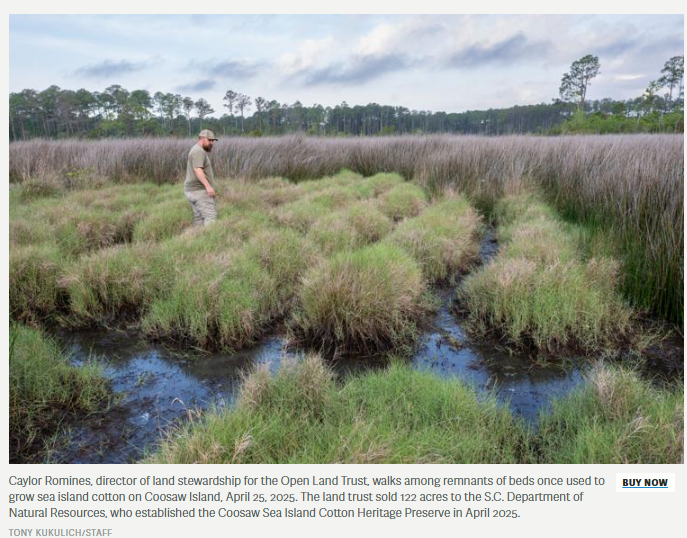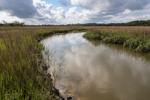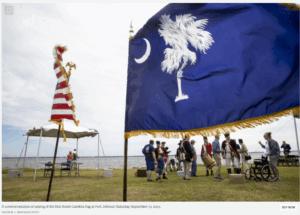SOUTH CAROLINA: New preserve protects SC sea island cotton fields and memory of the enslaved who toiled there
COOSAW ISLAND — What started as a idle observation made during the isolated days of the pandemic culminated recently in the dedication of the Coosaw Sea Island Heritage Preserve.
The 122-acre parcel in coastal Beaufort County is the latest addition to the S.C. Heritage Trust which for more than five decades has existed to inventory, evaluate and protect natural and cultural resources important to the state’s heritage.
Beyond the compelling natural qualities of the Coosaw Island tract, it’s the presence of remnant sea island cotton fields and the memory of the enslaved people who carved those fields out of the salt marsh that impart the land’s cultural significance.
“We don’t often talk about the real history, the real legacy, of what my ancestors, indigenous and African, went through on plantations like what was here,” said Marquetta Goodwine, also known an Queen Quet, during the recent dedication of the preserve.
Highly valued for the quality of its fiber, growing sea island cotton along the South Carolina coast started in the late 1700s. Production mostly ceased at the end of the Civil War. Limited production in the region continued until the boll weevil brought its end in the early years of the 20th century.
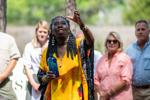
Marquetta Goodwine, also known as Queen Quet, performs a libation ceremony during the dedication of the 122-acre Coosaw Sea Island Heritage Preserve on Coosaw Island, April 22, 2025. The preserve includes remnants of fields dug by enslaved people to to grow sea island cotton.
Furrows, irrigation networks and drainage ditches necessary to grow cotton were, in all likelihood, hand dug by enslaved people. Despite the popularity of the crop in centuries past, there are very few remaining sites holding evidence of its presence, according to the S.C. Department of Natural Resources. Still, the Coosaw Island site sat unnoticed for decades, maybe as long as a century.
“Nobody knew they were there,” said Kristin Williams, executive director of the Beaufort-based Open Land Trust. “Families who’ve lived there for 40 years had no idea it was there.”
As Williams tells the story, Beekman and Cathy Webb walked the dusty, unpaved portion of Coosaw River Drive every day during the pandemic. During the daily stroll from their home on the island, Beekman Webb, a key figure in Lowcountry conservation efforts for decades, began to notice characteristics in the surrounding marsh that appeared to be man made.
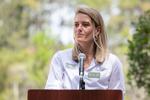
Kate Schaefer from the Open Land Trust speaks during the dedication of the Coosaw Sea Island Heritage Preserve on Coosaw Island, April 22, 2025. The Open Land Trust sold the 122-acre parcel to the S.C. Department of Natural Resources, who then established the preserve.
Slogging his way through the marsh to get a better look and studying historic aerial photos, Webb became convinced that he had found something significant. Consultation with local historian Larry Rowland and biologist Richard Porcher, who literally wrote the book on sea island cotton, confirmed the discovery.

